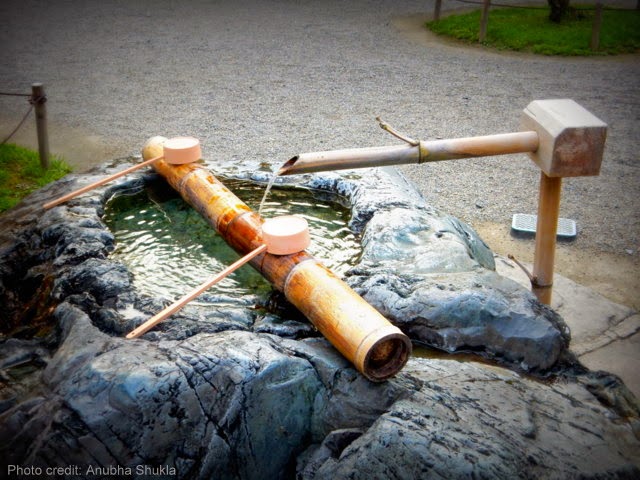 |
| Chuson-ji Temple in Hiraizumi of Iwate Prefecture in Japan |
It was May 16, 2014. India was witnessing a change, a change which I believed would place India at the forefront of development on world's map in the coming years. It wasn't just the change of the government. It was a change most of the Indians were waiting for and I was one of them. The National Democratic Alliance (NDA) led by the Bhartiya Janta Party (BJP) had swept Loksabha elections with 334 seats. NDA's PM designate Narendra Modi was all set to become the PM. Like millions of young people in India he symbolized hope for future and today he had finally arrived with a historic win. People who know me understand what it meant to me. At this happiest moment of my life I was sitting in Terminal 3 of the Indira Gandhi International Airport, New Delhi, waiting for my flight to Tokyo. Japan was going to be my home for some time.
I was looking at the screens showing Mr. Narendra Modi addressing the people in Vadodara, Gujarat, for the first time after the massive win. I was watching everything with a heavy heart, not just because I won't be a part of this national celebration but because I would be away from my country and my people for a long time. No matter what people say, it's not easy to leave your roots. Sometimes we keep our loved ones at the periphery of our heart, we don't let them in to know how much we love them. Telling them that we are going to miss them badly might portray us as an emotionally weak person. We don't want that, do we? We are trained to hide our true feelings to look brave.
Anyway, after an 8-hour flight I landed at the Narita International Airport and took JR Narita Express (NEX) train to reach JR Tokyo station. The Airport is around 64 km away from central Tokyo and the train takes about an hour to reach there. From Tokyo I took JR Tohoku Shinkansen (bullet train) to reach my ultimate destination- Sendai. Sendai is the capital city of Miyagi prefecture. The train covered over 300 km in 100 mins and I had already started feeling better about this country. But several thoughts didn't leave my mind. Being a vegetarian, how am I going to survive in this country? I don't even know a word of Japanese language. How would I interact with people? With most of the sign boards in Japanese how am I going to travel in case I want to travel alone?
To be honest, there were times when I entered into a restaurant and struggled to tell the staff that I don't eat fish and meat. There were times when I took a wrong bus because I couldn't read the sign board at the bus stop. And there were times when it took me 45 mins to buy something because I could not read the name and the ingredients. First few weeks were not easy but I have to tell you that even if Japanese don't understand your language, they try their best to help you. They are the most polite, helpful and respectful people I have ever met. Besides, unlike India everything is so perfect here. Trains and buses are always on time, clean and safe streets, tree-lined roads, no traffic congestion and systems are in place. What else do you want to live a comfortable life?
As Wendy Carlos said, "As human beings we do change, grow, adapt, perhaps even learn and become wiser." I don't know about other things but gradually I have got adapted to this environment. I searched for places where I could get vegetarian food. Surprisingly, I have found out a completely vegetarian restaurant and a vegan cafe here. I learned commonly used Japanese words. I usually collect ample information (online or offline) about the place I am travelling to. I pack my lunch if I am going on a day trip to a place where there is no possibility of getting anything vegetarian.
I am a travel freak and therefore before coming to Japan I searched on Google to
know more about Sendai but didn't find much information about the places I
could visit in and around the city. Since I live here now, I have explored some
amazing places such as Matsushima, Aoba
castle, Shichigahama
beach in Tagajo, Akiu Waterfall (Akiu Otaki), Zao
(Okama Lake) in last three months and I would try to write about them in this blog.
While I write this post Indian PM Narendra Modi has completed his 5-day successful visit to Japan. During his high-level visit, he also addressed the Indian community living in Japan and said,"जननी जन्मभूमिश्च स्वर्गादपि गरीयसी" (Mother and motherland are greater than heaven). That took me back to the memories of May 16 as I repeat in my head, "No matter how comfortable your life is in a foreign land, it's not easy to leave your roots".














